Trends and Solutions That Will Impact Cosmetic Brands in 2025
- Trends and Solutions That Will Impact Cosmetic Brands in 2025
- I. Executive Summary
- II. Introduction: The State of Inclusivity in the Beauty Industry
- III. Skin Tone Inclusivity: Moving Beyond the Basics
- IV. Gender Inclusivity in Beauty
- V. Age Inclusivity in Beauty
- VI. Accessibility and Inclusivity in Beauty
- VII. Diversity and Representation in Marketing
- VIII. The Role of Technology and Personalization in Enhancing Inclusivity
- IX. Conclusion: The Path Forward for 2025
- Start Closing the Gap in Your Brand’s Inclusivity
I. Executive Summary
The State of Inclusivity in Beauty report explores the rapid evolution of the beauty industry, with a specific focus on diversity, inclusivity, and personalization. This report provides a comprehensive analysis of the industry’s ongoing transformation, driven by consumer demands for authentic representation across skin tone, gender identity, age, and cultural backgrounds.
Key findings reveal that inclusivity is no longer optional – it’s a strategic imperative.
✧ With 50% of consumers preferring brands that prioritize cosmetic diversity and 31% of US shoppers avoiding brands
that lack diversity commitments, it’s clear that inclusivity is
a critical driver of consumer loyalty and brand growth.
The report delves into major shifts, such as the expansion of shade ranges, gender-neutral beauty lines, and pro-aging narratives. And all of these reflect consumers’ desire for products that align with their values.
Through the lens of AI-driven personalization and AR technologies, the report highlights the critical role of technology in delivering more inclusive beauty experiences. Virtual try-ons, AI shade finders, and personalized product recommendations are helping brands bridge the gaps in diversity, catering to the specific needs of traditionally underrepresented groups.
➥ FOCUS OF THE REPORT
The report covers several key areas, including skin tone diversity, gender representation, age inclusivity, and accessibility. It also delves into how technology and personalization are enabling brands to meet evolving consumer expectations. By identifying actionable trends, such as AI-driven personalization and inclusive product development, the report highlights strategies that will shape the beauty industry through 2025.
As brands continue to adapt, those who fully embrace inclusivity through sustained efforts in product development, marketing, and technology will not only thrive but also play a pivotal role in redefining the beauty landscape for a more inclusive era.
II. Introduction: The State of Inclusivity in the Beauty Industry
The beauty industry has shifted dramatically over the past decade, with diversity in cosmetics becoming a central focus for brands and consumers alike.
Historically, the industry was dominated by narrow beauty standards, often excluding diverse groups. Today, however, the industry is being reshaped by consumers demanding diversity across gender, age, ethnicity, and skin tone. Diversity in the beauty industry has, therefore, become crucial.
- 50% of consumers prefer brands that showcase cosmetic diversity and inclusivity (Cosmetics Design).
- 40% of Gen Z consumers rank diversity in beauty as one of the most important values when shopping for beauty products (Statista).
This shift is largely driven by the growing influence of social media and the increased connectivity among consumers:
- 57% of consumers research online before making a purchase (Internet Retailing)
Consumers are now more empowered to hold brands accountable and demand more inclusive offerings. Platforms like Instagram, TikTok, and YouTube have allowed beauty consumers to discover, discuss, and promote products that align with their values, amplifying the need for cosmetic diversity.
In this context, cancel culture has also emerged as a powerful force. And 42% of Gen Z consumers actively support cancel culture when it holds brands accountable. Brands that fail to embrace diversity and inclusivity, therefore, risk not only losing their customer base but also facing public backlash or boycotts.
Younger generations are leading this change, pushing brands to adopt broader definitions of beauty, free from conventional standards. And companies that do not align with these values are increasingly seen as outdated and inauthentic.
Beauty is deeply personal and consumers want to feel included, celebrated, and seen in a world that often tries to define standards for them. True beauty lies in honoring each person’s identity – whether it’s skin tone, style, or personal expression.
– Stephanie Anttonen, Brand Manager at Cosnova
III. Skin Tone Inclusivity: Moving Beyond the Basics
The challenge of skin tone inclusivity has long been one of the most significant issues in diversity in cosmetics. For years, the industry predominantly catered to lighter skin tones, offering limited shade ranges and alienating large segments of the population with darker complexions.
This exclusionary practice reflected a broader lack of diversity in the beauty industry, contributing to negative experiences for many consumers. However, increasing consumer demand for cosmetic diversity has forced brands to rethink their approach and prioritize inclusivity in product development.
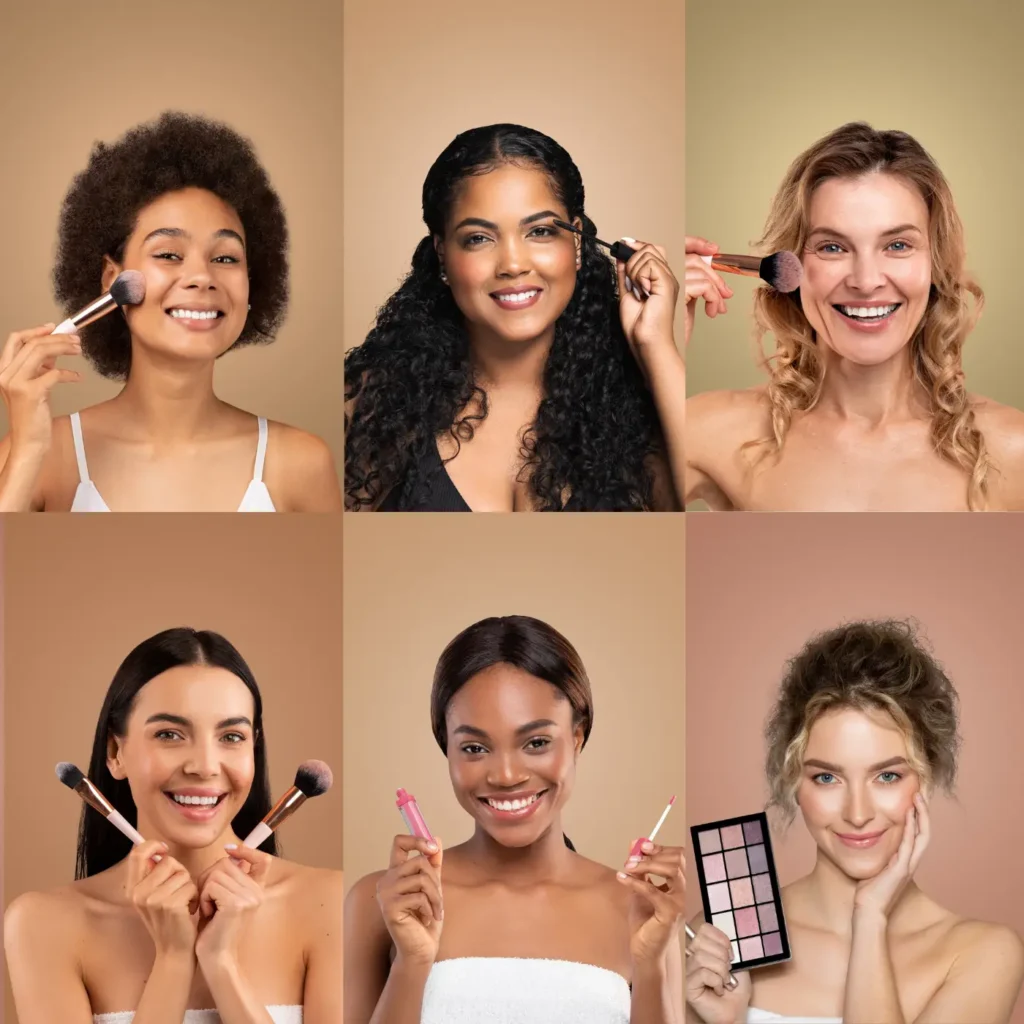
Consumers now expect more than just a superficial offering of diverse products. They want a meaningful commitment to representation and skin tone inclusivity across all categories, from foundation to skincare.
The beauty industry is at the forefront of this shift, with cosmetic diversity becoming a competitive advantage for forward-thinking brands.

WHAT DO THE NUMBERS SAY
-
- 53% of Black consumers report difficulty finding beauty products that match their skin tone, highlighting the historical gap in cosmetic diversity (Mintel). This significant percentage underscores the long-standing frustration felt by many consumers of color and the necessity for inclusive product ranges.
-
- Black consumers are 5.7 times more dissatisfied with makeup offerings compared to non-Black consumers (McKinsey & Company), emphasizing the need for the industry to continue addressing this disparity.
-
- Inclusive beauty brands grew 1.5 times faster than their less inclusive competitors in 2024 (Circana). This data makes a strong case for brands that prioritize inclusivity, as consumers increasingly prefer companies that offer diverse product lines.
CURRENT TRENDS
➥ Expanding Shade Ranges
Brands like Fenty Beauty have revolutionized the industry by launching products with wide-ranging shade offerings. Fenty’s initial release of a 40-shade foundation range set a new industry standard. It has proven that inclusivity is not only a moral imperative but also a highly successful business strategy.
This has also led to the so-called “Fenty Effect.” It can be described as a chain reaction of other brands jumping on the inclusivity bandwagon and launching more shade ranges in response to Fenty.
This includes brands such as M.A.C., L’Oréal, Maybelline, CATRICE Cosmetics, and e.l.f. Cosmetics, which have expanded their product lines to include more shades to address the needs of consumers with medium to dark skin tones.
➥ Innovative Shade Matching Tools
The traditional Fitzpatrick scale, used to classify skin tones, has long been criticized for its limitations, especially for people with darker skin tones.
This has led to the adoption of more inclusive tools like the Monk Skin Tone Scale, which provides a more nuanced and comprehensive classification of skin tones. The Monk scale enables brands to offer a broader range of products, ensuring that all consumers are adequately represented and that their skin tones are accurately matched.

➥ Technological Advancements in AI
AI-powered tools are playing a pivotal role in personalizing products for diverse skin tones. One of the most important developments has been the use of AI in shade matching, which allows for far greater precision in identifying subtle variations in skin tones.
Moreover, the introduction of tools like the Monk Skin Tone (MST) Scale has played a key role in this process. Unlike older models, the MST scale offers a wider, more inclusive range of skin tone classifications. It ensures that people of all ethnicities are properly represented in shade offerings.
These advancements in AI not only improve the customer experience but also help brands avoid biases that‘ve historically limited inclusivity. This includes addressing fairness in annotation, where AI systems are trained on diverse datasets that encompass a broad spectrum of skin tones, genders, and ethnicities. By using fair and comprehensive data, AI-powered tools ensure consumers are accurately represented, further closing the gap in cosmetic diversity.
➥ Representation in Product Development
Beyond shade ranges, cosmetic diversity extends to the formulas and finishes that cater to different skin types. Brands are increasingly recognizing the importance of offering products that suit various skin textures, which vary greatly across different ethnicities.
This includes considerations for oil control, hyperpigmentation, and melanin-rich skin types, all of which have been historically underrepresented in product formulations.
CATRICE Cosmetics, for example, boasts inclusive and intentional product development, reflected in their recent launch of 40 shades of foundation. They developed these products based on extensive research and real skin tones, i.e., by analyzing thousands of skin tones and images and surveying thousands of customers.
➥ Global Market Expansion
With the beauty industry’s globalization, there is a growing emphasis on developing products for regions with diverse ethnic populations.
Brands are no longer focusing solely on Western markets but are designing products that address the specific needs of consumers in regions like Africa, Asia, and Latin America, where diversity in the beauty industry is critical for success.
CHALLENGES AND OPPORTUNITIES
| Overcoming Tokenism While many brands have expanded their shade ranges, some have been accused of tokenism—offering products for diverse consumers without fully committing to a broader strategy of inclusivity. Consumers today, however, are quick to identify brands that merely expand shade ranges as a trend. So, the best way to go about it is for brands to authentically engage with their diverse audience through sustained efforts in product development, marketing, and representation. |
| Opportunities for Growth The success of diversity in cosmetics brands like Fenty Beauty and M.A.C. demonstrates that there is a lucrative opportunity for companies willing to invest in true inclusivity. Brands that innovate with advanced shade-matching technology, offer broader shade ranges, and develop products for diverse skin types will continue to see positive consumer reception and brand loyalty. |
| Monk Skin Tone Scale Developed to address the limitations of the Fitzpatrick scale, the Monk Skin Tone Scale offers a more detailed and inclusive framework for categorizing skin tones. This innovation allows brands to better serve a diverse customer base by accurately matching products to individual skin tones. |
| AI-Powered Foundation Matching AI technologies enable precise foundation matching, reducing the guesswork for consumers and enhancing their shopping experience. These tools analyze various skin tones and types, providing personalized recommendations that cater to a wide range of needs. |
IV. Gender Inclusivity in Beauty
The beauty industry is evolving rapidly, moving away from rigid gender binaries to embrace inclusivity in the beauty industry by offering products that cater to a diverse range of gender identities, as well.
Historically, cosmetics and skincare products were overwhelmingly marketed to women, reinforcing traditional gender norms. However, as societal perceptions of gender have shifted, diversity in cosmetics now includes a growing number of gender-neutral offerings designed for all consumers, regardless of their gender identity.
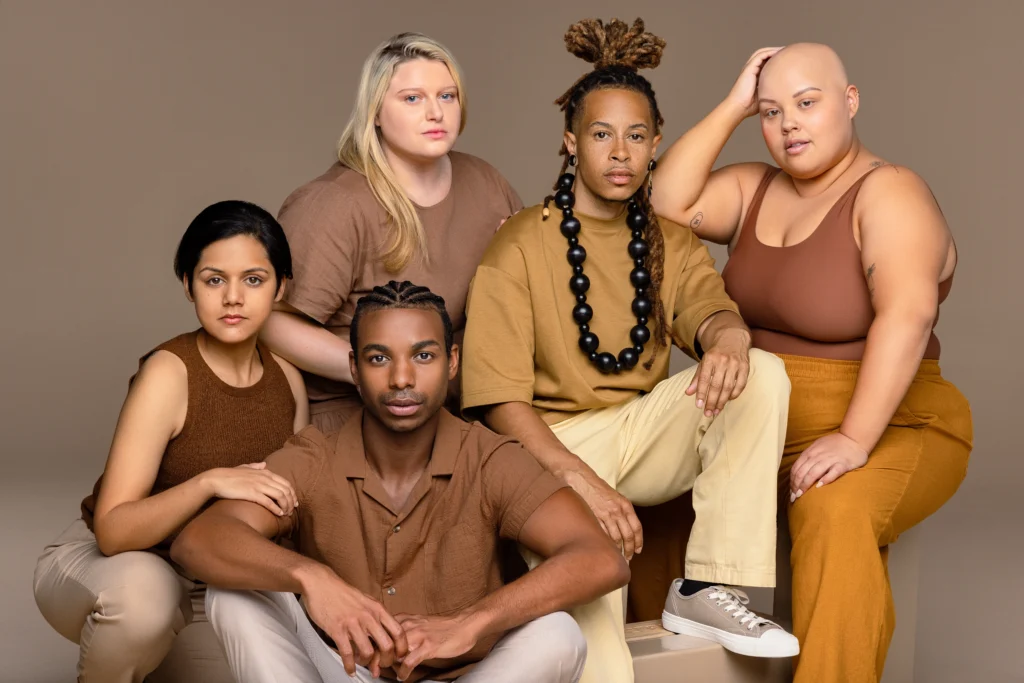
This shift reflects broader changes in societal values, with inclusivity and representation becoming central to the beauty conversation.
KEY INSIGHTS
✔ Demand from Gen Z
Over 1/3 of Gen Z consumers know someone who identifies with gender-neutral pronouns, significantly influencing their buying habits. This generation is leading the call for gender-neutral cosmetics, and brands that fail to acknowledge this shift risk alienating a key consumer demographic (Traackr). This shift is a significant driver of demand for products that are inclusive of all gender identities.
✔ Social media and influencer impact
Platforms like Instagram and TikTok have played a pivotal role in popularizing gender-inclusive beauty. Male and non-binary beauty influencers, such as James Charles, Bretman Rock, and Patrick Starrr, who even teamed up with MAC, have amassed millions of followers, showing that makeup and beauty are no longer confined to one gender. Their influence is pushing brands to recognize and serve an increasingly diverse audience.
✔ Changing consumer expectations
Consumers are no longer content with brands that adhere to outdated gender norms. They expect to see diversity in the beauty industry, not just in product lines but in marketing campaigns, packaging, and brand messaging. Gender inclusivity is not only about catering to a wider audience but also about challenging societal norms and creating spaces where everyone feels comfortable exploring beauty, regardless of their gender identity.

WHAT DO THE NUMBERS SAY
-
- 56% of men now have a skincare routine, according to the research from the World Advertising Research Centre (WARC), reflecting the growing interest in beauty and skincare among male consumers (Cosmetic Business).
-
- 72% of U.S. male consumers aged 18 to 34 now incorporate makeup into their grooming routines, signaling a transformative shift in the cosmetics industry and redefining masculinity in beauty and personal care. (Cosmetics Design), a recent Mintel survey reveals.
-
- The rise of gender-neutral products is significant, with brands like Fenty Skin and Aesop leading the charge. These brands’ success demonstrates that consumers are eager for products that cater to diverse gender identities, pushing the boundaries of traditional beauty marketing.
CURRENT TRENDS
➥ Gender-Neutral Product Lines
Brands are increasingly moving beyond the traditional “for men” and “for women” labels.
For example, Fenty Skin and Aesop are part of a growing number of inclusion beauty lines that remove gender-specific labels and focus on creating products for everyone. This trend toward gender neutrality reflects the growing understanding that beauty and self-care are universal experiences, not confined to a particular gender.
➥ Rise of Male Skincare
Male consumers are now a key growth demographic in the beauty and skincare market.
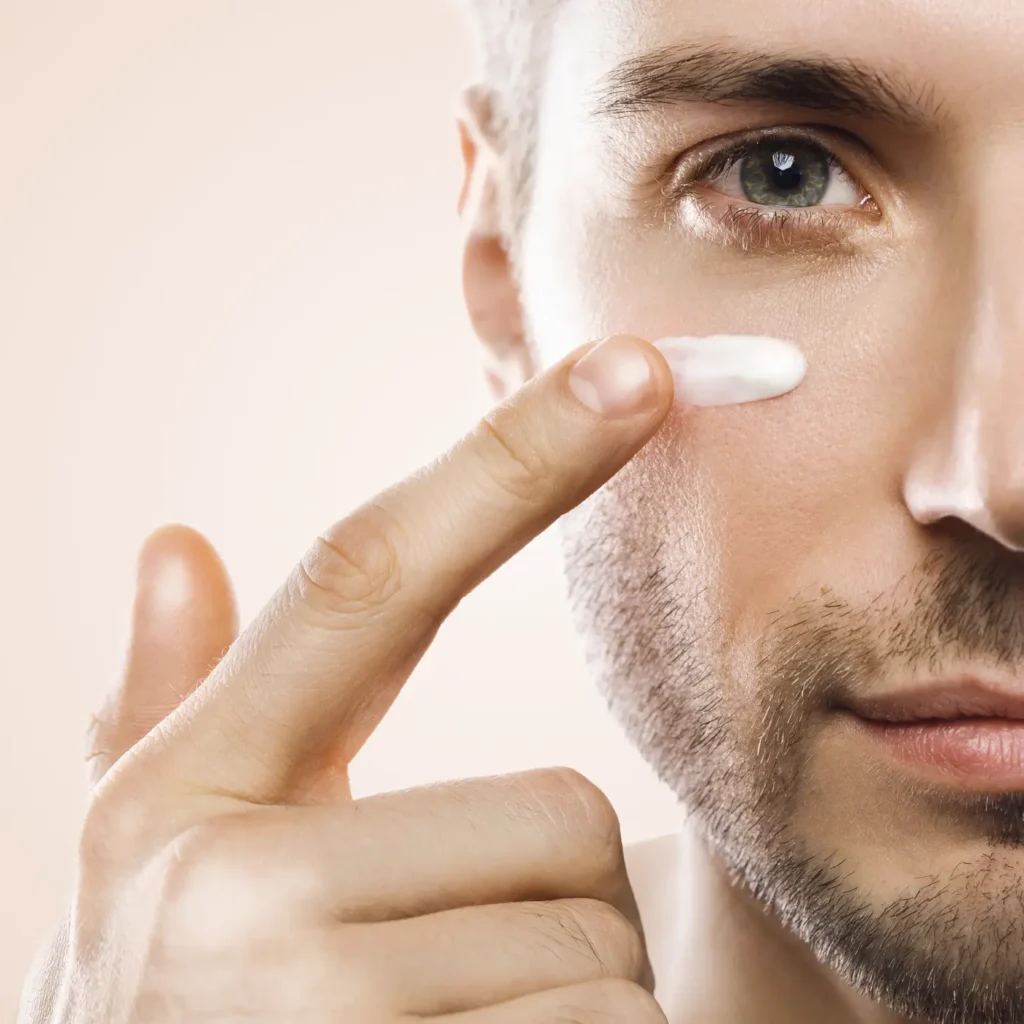
Brands like CeraVe, which markets without gender-specific targeting, and Aesop, known for its unisex skincare and fragrances, are capitalizing on this trend.
➥ Men’s Makeup on the Rise
While male grooming products have been around for decades, there has been a recent surge in the visibility of men’s makeup, as well.
The introduction of products like Boy de Chanel, which offers foundation, lip balm, and eyebrow pencils for men, reflects a growing recognition that beauty is not exclusively for women.
Social media influencers and makeup artists who identify as male or non-binary have played a key role in normalizing makeup use among men.
➥ Gender Fluidity in Marketing
High-profile beauty campaigns are increasingly featuring gender-fluid and non-binary individuals, signaling the industry’s broader commitment to diversity in beauty.
Celebrities like A$AP Rocky and Lil Nas X have become ambassadors for gender-inclusive beauty, appearing in campaigns for brands like Fenty Skin and helping to normalize beauty and skincare for all genders.
This kind of representation is essential in changing perceptions of who beauty products are for, encouraging a more inclusive market.
➥ Inclusive Packaging and Messaging
Brands are also shifting their packaging and messaging to appeal to a broader audience.
Fluide, a brand known for its gender-inclusive approach, uses bold colors and creative design to attract consumers who identify as non-binary or gender-fluid.
The goal is to create an environment where beauty products are not restricted by gender norms but are accessible to all, reflecting the fluidity of modern gender identity.
CHALLENGES AND OPPORTUNITIES
| Navigating Gender Norms While the industry is moving toward gender inclusivity, there remains a challenge in fully breaking away from traditional gender norms. Some brands still use gendered language or imagery in their marketing, limiting their ability to attract a broader audience. Brands that truly want to embrace gender inclusivity must rethink their messaging, product development, and packaging to reflect modern gender fluidity. |
| Opportunities for Growth Brands that successfully cater to gender-neutral consumers are likely to see strong growth, as this market is expanding rapidly. There is an opportunity to develop products that appeal to everyone, regardless of gender, such as universal skincare solutions, makeup, and fragrances. Inclusive marketing strategies, gender-fluid packaging, and authentic engagement with gender-diverse communities will be crucial for success. |
| Inclusivity Beyond Products Gender inclusivity in beauty extends beyond the products themselves to the brands’ overall ethos and culture. Companies that adopt a fully inclusive approach—celebrating gender diversity in their hiring practices, leadership, and partnerships—will set themselves apart as industry leaders in the movement toward true inclusivity in the beauty industry. |
V. Age Inclusivity in Beauty
To ignore half of the adult population with beauty products is not great business.
– Alison Bryant, Senior VP of Research at AARP

For decades, the beauty industry has been heavily focused on youth, often sidelining older consumers with products and marketing campaigns that emphasize “anti-aging” rather than celebrating the natural aging process.
However, the trend toward age inclusivity is gaining momentum, driven by changing consumer attitudes and a rejection of traditional “anti-aging” narratives. According to Provital, the concept of “well-aging” is replacing “anti-aging” in consumer discourse, as people are now encouraged to embrace aging as a natural and beautiful process.
This shift is increasingly important to inclusivity in the beauty industry, as brands recognize the value of older consumers in the evolving landscape of diversity in cosmetics.

CURRENT TRENDS
➥ From “Anti-Aging” to “Pro-Aging”
Brands are moving away from the traditional anti-aging rhetoric and instead promoting well-aging and pro-aging products that empower older consumers.
This shift reflects changing consumer attitudes, where beauty is increasingly being seen as ageless and not confined to youth. We are, therefore, increasingly moving toward age positivity, as seen with the popularity of campaigns like Loewe’s Spring 2024 campaign featuring 88-year-old Dame Maggie Smith, which reflects the growing embrace of age diversity across industries.
➥ Authenticity and Representation
Consumers are demanding more authentic portrayals of beauty across all ages, with 78% of consumers aged 18-24 supporting the use of unedited images in beauty advertisements, according to Mintel.
This demand for authenticity is not limited to younger consumers; it reflects a broader societal push toward honest, inclusive representations of beauty that celebrate aging rather than diminishing it.
➥ Older Brand Ambassadors
The use of older models and ambassadors has become a hallmark of the age inclusivity movement.
High-profile collaborations with figures like Maye Musk for CoverGirl (aged 69 at the time) and Jessica Lange for Marc Jacobs Beauty (aged 64 at the time) represent a growing trend of showcasing older women in high-fashion beauty campaigns.
These campaigns reflect a new appreciation for the beauty of aging and further promote diversity in beauty.
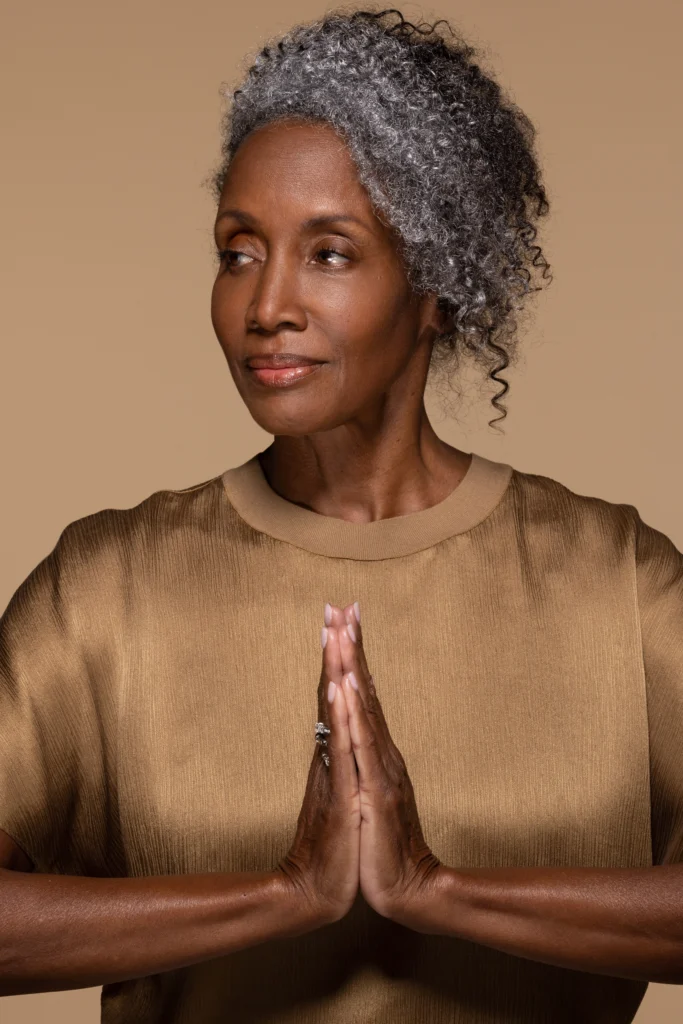
➥ Influence of Cultural Trends
The popularity of age-positive narratives, reinforced by movements like The Golden Bachelor, a show by ABC, and TikTok trends such as #TurningMyMomIntoMe, reflects a societal shift toward embracing diverse representations of aging.
These trends create opportunities for brands to position themselves as inclusive and forward-thinking by highlighting age diversity in both product formulations and marketing campaigns.
CHALLENGES AND OPPORTUNITIES
| Overcoming Ageist Narratives While the beauty industry is gradually shifting toward more inclusive messaging, there remains an opportunity to fully break free from ageist stereotypes. Brands that consistently emphasize age inclusivity in product offerings, marketing campaigns, and customer engagement stand to benefit from a rapidly expanding demographic of older consumers. |
| Innovation in Product Development As searches for mature makeup increase by over 30% (Makeup in Paris), the demand for products that address the specific concerns of older consumers – such as skin elasticity, hydration, and brightness – is set to rise. Brands that innovate and offer solutions tailored to mature skin will be well-positioned to lead the market in pro-aging beauty. |
VI. Accessibility and Inclusivity in Beauty
Often the disability is in the design, not the person.
– Terri Bryant, Founder of Guide Beauty
As inclusivity continues to shape the beauty industry, accessibility for people with disabilities, older consumers, and those from various socio-economic backgrounds is emerging as a critical priority. With approximately 1.3 billion people living with some form of disability, it’s essential for beauty brands to cater to this often-overlooked segment.
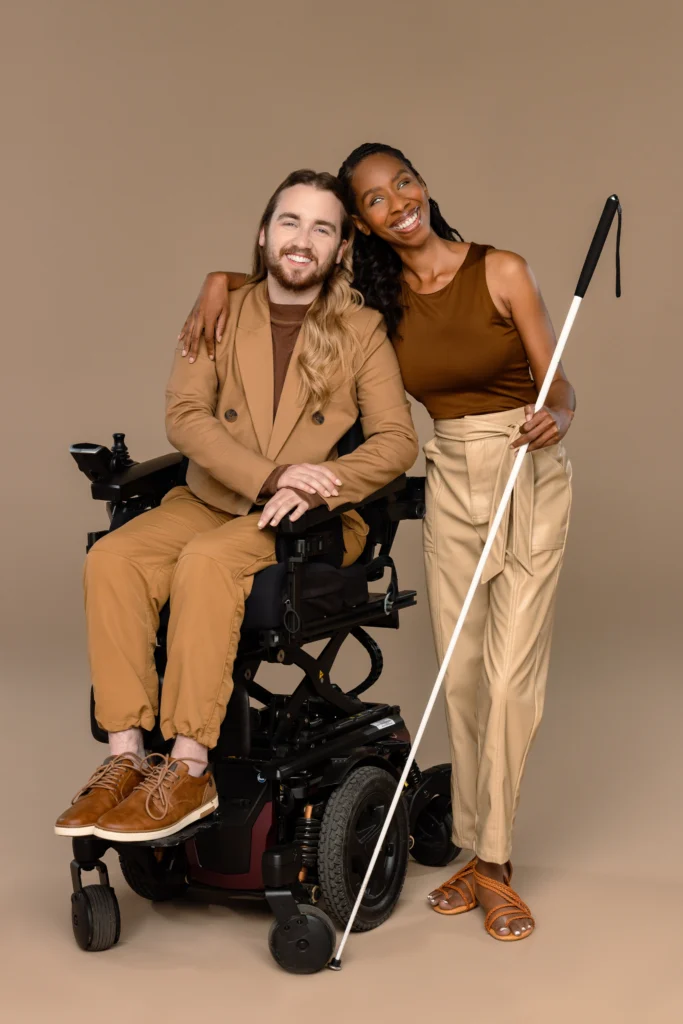
Accessibility also extends beyond physical limitations – affordability is increasingly seen as a key element of inclusivity. Beauty consumers agree that a brand is inclusive if it offers affordable products, highlighting how price impacts perceptions of inclusivity.
By embracing accessible design, leveraging technology, and offering products at accessible price points, the industry is moving toward more inclusive beauty experiences that allow everyone, regardless of limitations, to engage with beauty products in meaningful ways.

WHAT DO THE NUMBERS SAY
- An estimated 16% of the global population (i.e., 1.3 billion or 1 in 6 of us) experience significant disability. (World Health Organization)
- A survey of disabled consumers revealed that 95.1% felt there were not enough accessible beauty brands, and 88.3% believed there was insufficient representation of disabilities in the industry (Fashioneyesta). This data underscores the urgent need for more beauty brands to address accessibility, not just in product design but also in representation and marketing.
- 27% of beauty users believe a brand is inclusive if it offers affordable products, showing that price plays a crucial role in perceptions of inclusivity. (Mintel)
CURRENT TRENDS
➥ Accessible Packaging Innovations
Founded by Selena Gomez, Rare Beauty is a leader in accessible design. The brand’s packaging is specifically designed for people with limited mobility, ensuring that beauty products are easy to open and apply.
L’Oréal has also made strides with the introduction of HAPTA, the world’s first handheld computerized makeup applicator, which enables people with dexterity challenges to apply makeup with greater ease.
These innovations highlight how accessible design is reshaping beauty, making it more inclusive for all.
➥ Virtual Try-Ons for Accessibility
For people with mobility issues or disabilities, physically going to a store to test makeup can be challenging.
AI-powered virtual try-ons offer a convenient solution, allowing users to experiment with makeup from the comfort of their homes. This technology is especially beneficial for individuals who rely on caregivers or face physical challenges when visiting stores. Virtual try-ons also allow older adults to engage with beauty products without the need for in-store assistance.
➥ Universal Design in Beauty
Brands like Guide Beauty, founded by makeup artist Terri Bryant, are pioneering accessible beauty tools designed for people with disabilities.
After being diagnosed with Parkinson’s disease, Bryant reimagined makeup application to suit people with dexterity issues. Selma Blair, who has Multiple Sclerosis, also serves as the brand’s chief creative officer, making Guide Beauty a champion of universal design in the beauty space.
This growing trend highlights how accessible design can be both functional and empowering for users.
➥ Affordable and Accessible Products
Affordability plays a key role in inclusive beauty, ensuring products are accessible to a broader audience, not just those with higher incomes.
Brands like Fenty Beauty and Rare Beauty have succeeded by offering high-quality products at reasonable prices, making consumers feel catered to without excessive spending. This has shifted the perception of inclusivity, where affordability is now seen as a critical factor.
Moreover, unlike luxury brands, which often limit access to those with deeper pockets, mass-market beauty brands that deliver quality at lower price points are driving inclusivity, ensuring it extends beyond design to pricing strategies.
➥ Inclusive Representation
Influencers like Gabe Adams, among many others, are helping to push disability representation in the beauty industry.
Their rise in popularity is challenging outdated perceptions of beauty and promoting greater inclusivity for people with disabilities. These influencers are not just advocating for accessible products but also showing how beauty can be empowering for everyone.
➥ Aging Population’s Needs
With the world’s population aging, accessibility is becoming more important for older adults who may have limited mobility or vision.
Virtual try-ons and voice-controlled devices are particularly useful for this demographic, allowing them to interact with beauty products without needing physical testers or store visits.
CHALLENGES AND OPPORTUNITIES
| Removing Barriers in Retail While technology is making strides in improving accessibility, brands still face challenges in ensuring that physical stores are welcoming to people with disabilities. In addition to offering virtual try-ons both online and offline, retailers should invest in making their physical spaces more accessible, such as with wheelchair ramps and accessible product displays. |
| Designing for Disability One of the greatest challenges in the beauty industry is the lack of universal design. As Terri Bryant notes, “the disability is in the design, not the person,” highlighting how brands must rethink packaging and product design to be more accessible. From easy-open packaging to voice-controlled beauty tools, brands have an opportunity to make beauty more inclusive for people with disabilities. |
| Market Growth Potential The demand for accessible beauty is growing. Brands that prioritize accessibility, from product development to packaging and affordability, will not only cater to a largely underserved market but also position themselves as leaders in inclusive beauty. As the number of consumers with disabilities increases, accessible products and innovations like Rare Beauty’s user-friendly packaging and L’Oréal’s HAPTA will be crucial in meeting this demand. |
VII. Diversity and Representation in Marketing
Consumers today expect more from brands in terms of diversity and representation. The beauty industry’s old approach of superficial diversity no longer resonates. Instead, authentic and meaningful representation has become crucial for connecting with audiences.


WHAT DO THE NUMBERS SAY
- 31% of US shoppers would not buy from a brand that isn’t committed to diversity, equity, and inclusion (DEI). (Savanta)
- Inclusive beauty brands are growing 1.5 times faster than their less inclusive competitors. (Circana)
- Inclusive brands including M·A·C, Dove, L’Oréal Paris, Maybelline New York, NYX Cosmetics, Fenty, and e.l.f Cosmetics, saw an 18% collective growth rate compared to 12% for less inclusive brands, outpacing the industry. (Circana)
- 96% of women say that feeling beautiful directly impacts their self-esteem, emphasizing the importance of inclusive marketing that allows all women—regardless of age, race, or body type—to feel represented and valued. (Forces of Beauty report)
CURRENT TRENDS
The days of superficial gestures, such as token representation, are over. Instead, consumers are holding brands accountable for meaningful representation across all touchpoints, from product offerings to marketing campaigns.
Plus, the influence of social media has dramatically reshaped beauty marketing, making diversity a key factor in purchasing decisions. Today’s consumers want brands to reflect the world they live in, showcasing real, diverse beauty that includes all races, body types, genders, and ages.
And campaigns like Fenty Beauty’s inclusive foundation range and Dove’s Real Beauty continue to set industry standards by pushing brands to move beyond merely meeting quotas.
CHALLENGES AND OPPORTUNITIES
As inclusivity becomes a business imperative, brands must move beyond tokenism to create long-term strategies that embed diversity across their operations – from product development to marketing.
The Forces of Beauty Report underscores that women of all races believe, “one of us cannot represent all of us.” Consumers are calling for consistent and meaningful representation, demanding to see real women reflected in beauty advertising.
Token efforts, such as one-off photoshoots, are no longer enough. Brands must engage in sustained efforts to correct the paradigm and celebrate the full spectrum of beauty, especially for women of color.
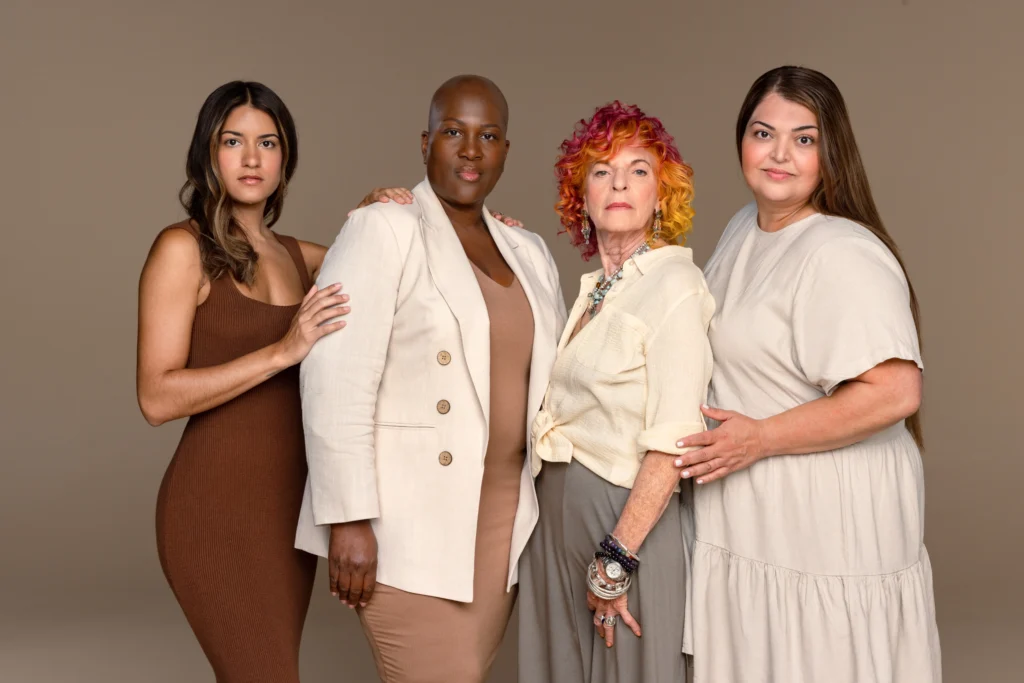
VIII. The Role of Technology and Personalization in Enhancing Inclusivity
In today’s beauty industry, technology and personalization are driving forces behind a more inclusive and customer-focused experience. AI and AR technologies are revolutionizing how beauty products are tailored to individual needs. They foster inclusivity by offering customized solutions for every skin tone, type, and personal preference.
As consumers increasingly expect brands to cater to diverse identities, the integration of AI-driven personalization is reshaping the landscape of inclusion beauty.

WHAT DO THE NUMBERS SAY
- 76% of consumers are more likely to make a purchase when offered personalized recommendations, while 78% are more likely to repurchase and recommend brands that offer tailored experiences. (McKinsey & Company)
- Virtual try-ons can lead to a 2.4x increase in purchase likelihood. (Tech Crunch)
- Using virtual try-ons can lead to up to 64% fewer product returns. (Glossy)
- It’s estimated that only 15% of online retailers have adopted AR. (KommandoTech)
CURRENT TRENDS
➥ Virtual Try-Ons and AR Integration
Augmented reality (AR) technologies allow users to try makeup virtually, providing a realistic experience that helps them make informed decisions. By letting customers visualize products on their own skin tone, these tools significantly enhance inclusivity.
Brands that have adopted virtual try-ons report reduced return rates by up to 64% and increased purchases by 2.4 times, demonstrating the impact of personalized, tech-driven shopping experiences.
➥ AI-Driven Personalization
AI-powered tools such as virtual try-ons and foundation shade finders enable personalized recommendations based on precise data analysis, like skin tone and preferences.
These tools are critical in providing consumers with accurate product matches, minimizing guesswork, and addressing long-standing issues in cosmetic diversity.
This technology offers a solution to gaps in representation, particularly for people with medium to darker skin tones.
➥ Inclusive Shade Matching
AI technologies are not just enhancing personalization but are also central to making beauty more inclusive. For instance, by integrating a shade finder that is based on the Monk Skin Tone Scale, brands can properly represent diverse skin tones and matching ideal products.
This approach solves a key problem for consumers who’ve historically struggled to find products tailored to their specific skin tones. It addresses the 5.7x higher dissatisfaction rate reported by Black consumers compared to non-Black consumers when shopping for makeup.
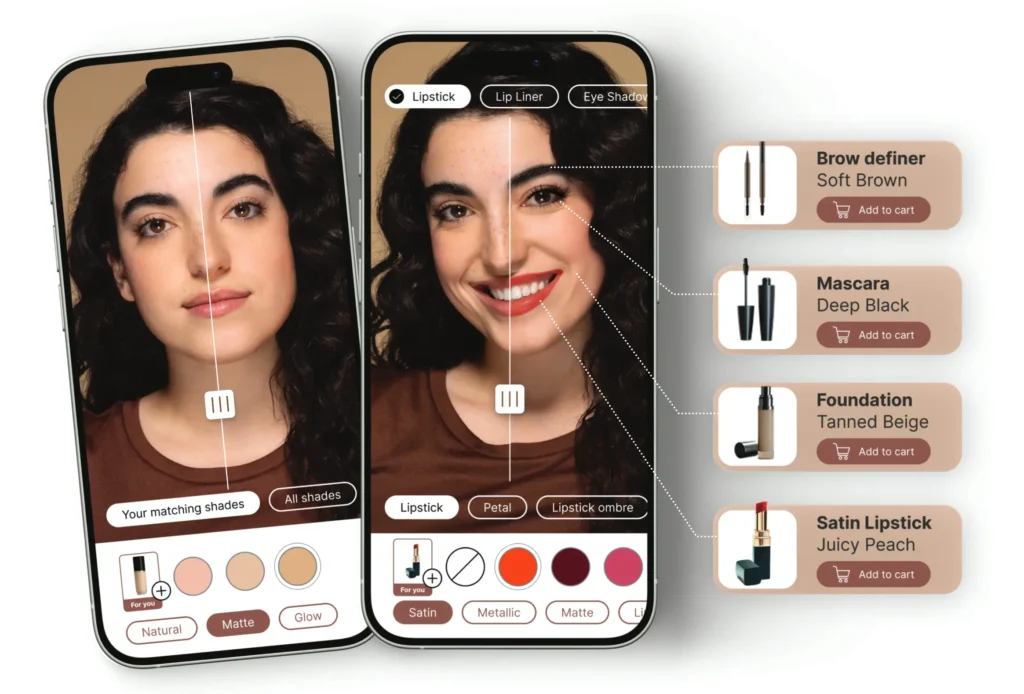
CHALLENGES AND OPPORTUNITIES
As AI and AR technologies become more integrated into the beauty landscape, brands must focus on integrating these tools across all platforms – online and in-store – to deliver a seamless, inclusive experience.
Investing in personalized solutions is not only a way to boost consumer engagement. It’s also an opportunity to enhance inclusivity in the beauty industry, allowing brands to meet diverse needs and create lasting loyalty.
IX. Conclusion: The Path Forward for 2025
The beauty industry is undergoing a fundamental transformation driven by consumers’ demand for diversity, inclusivity, and personalization. And in 2025, it’s clear that diversity in cosmetics is not just a trend but a vital component for any brand’s long-term success. Consumers expect more from brands, pushing them to prioritize authentic representation across gender, race, age, and skin tone.
The rise of AI and AR technologies has further accelerated this shift, offering personalized and inclusive beauty solutions for all. Tools like virtual try-ons and AI-powered shade finders have become game-changers, allowing brands to serve diverse audiences more effectively. These innovations are closing the gaps in cosmetic diversity, particularly for traditionally underserved consumers.
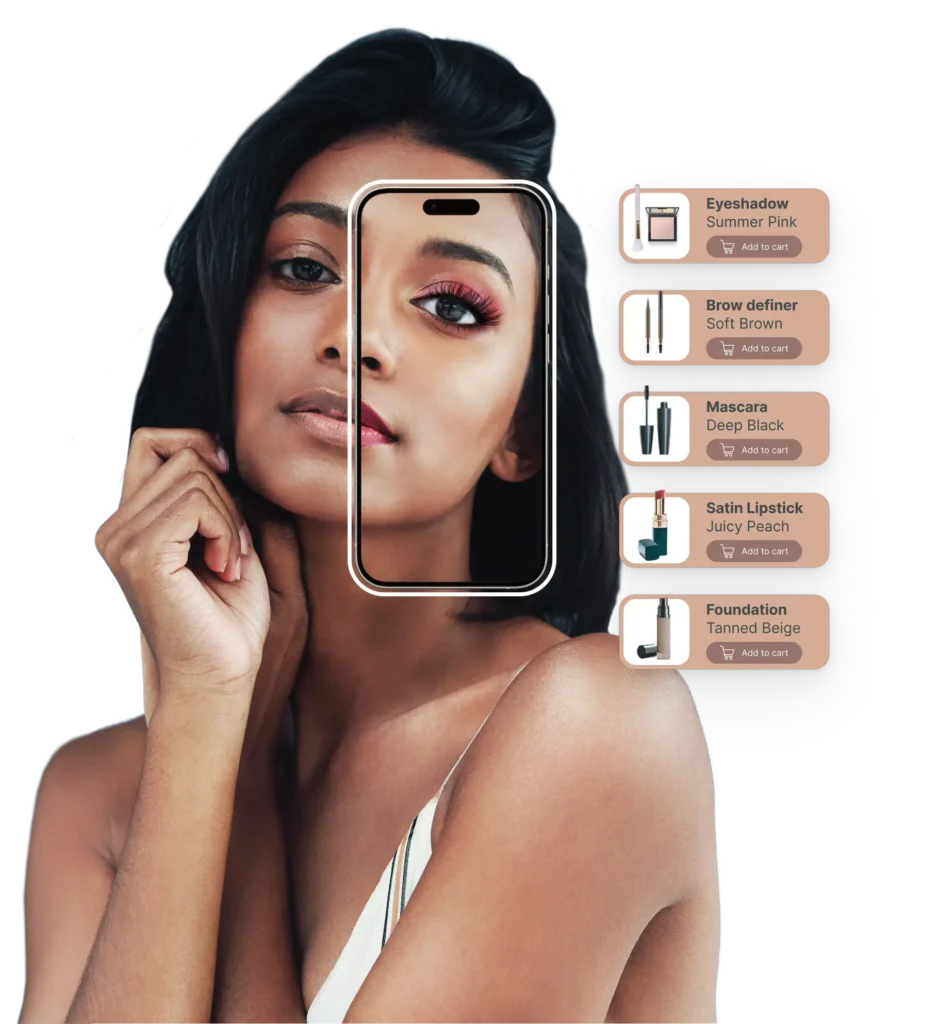
But the path forward involves more than just tech innovations. Successful brands will also need to focus on intentional product development. They need to ensure that their products are designed to be accessible and usable by all consumers from the start. This includes adopting universal design principles and engaging in thoughtful, holistic development strategies reflecting the diverse needs of today’s consumers.
Moreover, social media is an invaluable tool for brands to actively engage with their audiences, listen to feedback, and learn how to better reflect diversity in their offerings. Because consumers are no longer passive – they expect to be part of the conversation. And brands that embrace this two-way communication and actively listen to their audience will build deeper connections and foster loyalty.
Looking forward, brands that continue to prioritize inclusivity will stand out in an increasingly competitive market. And they can do that by embracing pro-aging narratives, promoting gender neutrality, and using advanced AI technologies to personalize beauty. The beauty landscape is changing rapidly, and companies that take a balanced, thoughtful approach to inclusivity will not only thrive but also help redefine beauty for generations to come.
By fully integrating diversity, inclusive beauty practices, and social engagement into their core values, companies can foster deeper connections with consumers, ensuring loyalty, trust, and sustainable growth as the industry moves into 2025 and beyond.
Start Closing the Gap in Your Brand’s Inclusivity
…WITH ARBELLE’S INCLUSIVE & PERSONALIZED SOLUTIONS
✧ Foundation Shade Finder: World’s first inclusive shade finder identifies the best foundation match for each customer.
✧ Virtual Makeup Try-On: Empower customers to explore your products anytime, anywhere with hyper-realistic AR makeup.
✧ Product Recommender: Personalize the beauty journey with product recommendations tailored to each customer.
✧ Look Finder (coming soon): Help customers discover complete, fully customized makeup looks.

Contact us
For any questions, more info, or inquiries about our beauty AR solutions, reach out to our team anytime!